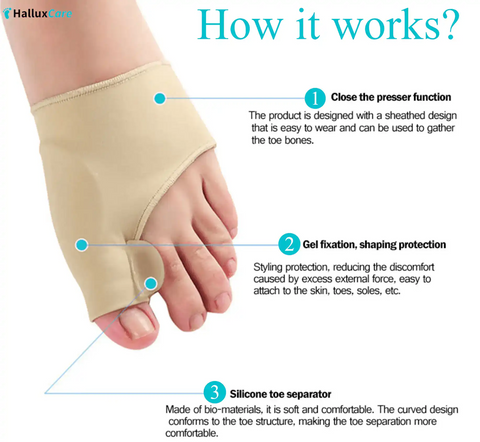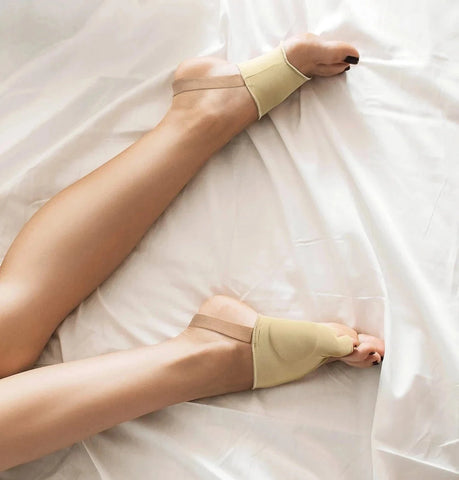Why You Shouldn’t Always Stretch Overworked Bunion Muscles: Understanding Bunion Pain Relief
By Dr. Samantha Lee, DPM – Board Certified Podiatric Physician
Last Updated: 2025-10-12
When searching for bunion pain relief, most advice focuses on stretching, strengthening, and supporting your feet. However, recent discussions in communities like r/bunions have raised an important point: If part of bunion pain is from muscles being overstretched and overworked, wouldn’t stretching help? Let’s explore expert-backed strategies for bunion pain, emphasizing when to stretch, when to strengthen, and how best to protect your feet.
What Causes Bunion Pain?
Bunion pain is not solely caused by the bony prominence at the base of your big toe. According to the American Academy of Orthopaedic Surgeons and Mayo Clinic, pain often involves the surrounding soft tissues, muscles, and tendons:
- Muscle Imbalance: As the big toe shifts out of alignment, some muscles and ligaments become tight while others are stretched and weakened.
- Overuse: To stabilize the misaligned joint, certain muscles must work harder, often resulting in fatigue and soreness.
- Inflammation: Constant pressure from footwear or repetitive movements can inflame the tissues around the bunion, making them tender and swollen.
Should You Stretch Overworked Muscles?
Clinical evidence and expert consensus caution against stretching muscles that are already overstretched and fatigued. Here’s why:
- Overstretching Can Worsen Pain: If a muscle is elongated and tired, stretching it further can aggravate microtears and increase irritation.
- Strengthening is Often Superior: Targeted exercises to restore muscle balance and joint stability are more effective for long-term relief.
- Targeted Approach: Stretch only the tight muscles—most commonly those in the calf and plantar fascia—while focusing on strengthening the weakened, overstretched muscles inside the big toe.
4.9 ⭐⭐⭐⭐⭐ (1843 reviews)
The Best Ways to Relieve Bunion Pain
1. Strengthen and Support
- Toe Spacers & Sleeves: Using orthopedic bunion sleeves helps realign the toe, easing pressure and supporting joint health.
- Foot Exercises: Practice gentle strengthening, such as toe curls and towel scrunches, to stabilize the joint and restore muscle balance.
- Supportive Footwear: Wear shoes with a wide toe box, low heels, and solid arch support to reduce friction and allow toes to spread naturally.
2. Gentle Stretching—Only Where Needed
- Focus stretching on tight muscles (like the calf and bottom of the foot) to ease tension and improve mobility.
- Avoid stretching the muscles on the inside of the big toe if they are already fatigued. Instead, prioritize strengthening.
3. Reduce Inflammation and Pain
- Cold Therapy: Apply ice packs for 10–15 minutes to reduce swelling and soothe soreness.
- Topical Relief: Use anti-inflammatory creams or soothing oils to ease discomfort around the bunion area.
4. Protect and Cushion
- Use bunion pads, sleeves, or custom orthotics to reduce pressure and friction, especially during daily activities.
- Medical-grade bunion sleeves provide all-day protection and gentle correction.
Why an Orthopedic Bunion Sleeve Makes a Difference
- Provide gentle, non-invasive realignment and support.
- Lessen friction and irritation from footwear.
- Help fatigued muscles relax and recover by stabilizing the joint and redistributing pressure.
Key Takeaways
- Stretching is not always beneficial—avoid stretching already overstretched, overworked muscles around your bunion.
- Prioritize strengthening weak muscles and supporting the joint for more effective long-term relief.
- Use targeted stretching for tight areas only, such as the calf or plantar fascia.
- Orthopedic sleeves and proper footwear are essential tools for daily bunion care, comfort, and correction.
Practical Tips & Real-World Applications
- Daily Routine: Incorporate toe-strengthening exercises and wear your bunion sleeve during the day for optimal support.
- Footwear Choices: Always try on shoes at the end of the day (when your feet are slightly swollen) to ensure a comfortable fit.
- Pain Management: Keep an ice pack in your freezer for quick relief after long walks or standing periods.
- Travel Tip: Pack a pair of bunion sleeves and supportive shoes when you travel to avoid flare-ups.
- At-Home Care: Massage the area gently with a soothing oil to maintain tissue flexibility and comfort.
Frequently Asked Questions (FAQs)
Q: Should I stretch my bunion if it feels tight?
A: Only stretch if the tightness is in the calf or bottom of the foot. Avoid stretching the inside of the big toe if it already feels fatigued or overstretched.
Q: What exercises help bunion pain most?
A: Gentle toe curls, marble pickups, and towel scrunches are effective for strengthening foot muscles and supporting the joint.
Q: Can bunions be corrected without surgery?
A: While only surgery can realign the bone, conservative measures—like strengthening exercises, orthopedic sleeves, and proper footwear—can relieve pain and slow progression.
Q: How often should I use a bunion sleeve?
A: Many podiatrists recommend daily wear, especially during periods of increased activity or when wearing shoes.
Q: When should I see a doctor about my bunion?
A: If pain persists despite home care, if your joint becomes red, hot, or swollen, or if walking becomes difficult, consult a podiatrist for personalized treatment.
Ready to Take the Next Step for Your Foot Health?
Have you tried strengthening instead of stretching for your bunion pain? Share your experiences or questions below—let’s support each other on the journey to pain-free feet!
Recommended Bunion Relief Products from HalluxCare:
If you're looking for relief from bunion pain, consider using the Orthopedic Bunion Pain Relief & Correction Sleeve, which provides support and helps to alleviate discomfort.
For additional protection, the Tailor's Bunion Bunionette Pain Relief Protection Sleeves are designed to offer comfort and protection for bunionette pain.
To nourish and soothe the skin around bunions, as well as to promote healthy hair, consider the Jamaica Black Castor Oil Soothing Oil. Known for its moisturizing and anti-inflammatory properties, it helps alleviate discomfort around bunions and supports hair growth and scalp health.
References:
- American Academy of Orthopaedic Surgeons (AAOS). “Bunions (Hallux Valgus).” 2023.
- Mayo Clinic. “Bunions: Symptoms & Causes.”
- Journal of Foot and Ankle Research, “Muscle changes in hallux valgus.” 2022.
- American Orthopaedic Foot & Ankle Society. “Bunionette Deformity.”
- Cleveland Clinic. “How to Treat Bunions Without Surgery.” 2024.
- Foot & Ankle International. “Non-surgical Management of Bunions.” 2021.
- Harvard Health Publishing. “Bunions: Tips for Relief.”




